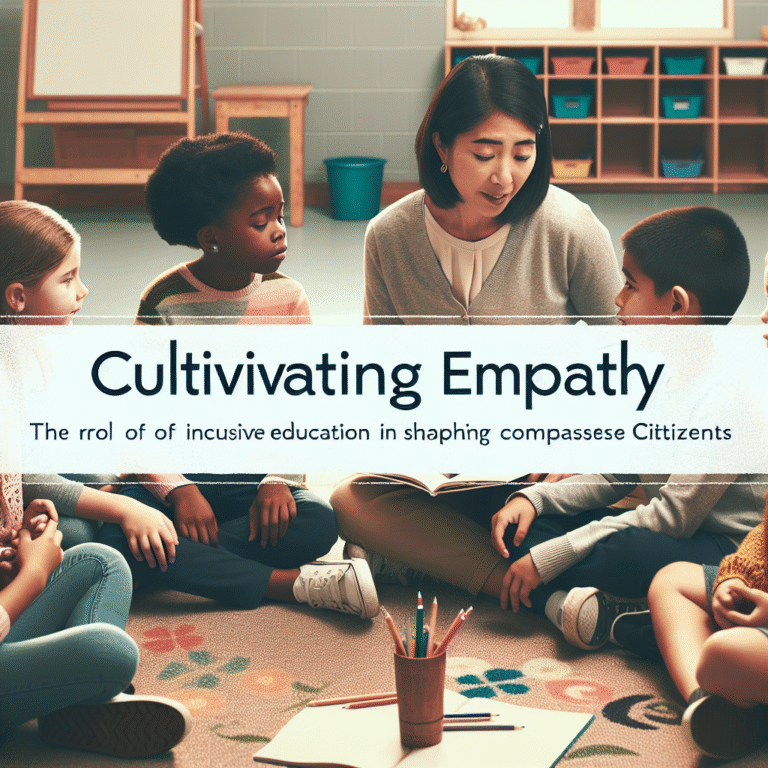
Introduction
Imagine a classroom where each student engages deeply, not just with the material but with each other. A place where the teacher acts as a guide, crafting experiences that promote genuine understanding and skill development. This scenario isn’t merely a dream; it’s made possible through the application of the Zone of Proximal Development (ZPD). Understanding this pivotal theory in educational psychology allows educators to create dynamic learning environments tailored to individual needs. In this article, we dive deep into From Theory to Practice: Applying the ZPD in Classroom Settings, illuminating how this theory can transform educational practices.
Understanding the Zone of Proximal Development
The ZPD, a concept developed by Soviet psychologist Lev Vygotsky, refers to the difference between what learners can do without help and what they can achieve with guidance. This theory emphasizes the vital role of social interactions in cognitive development. By recognizing a student’s ZPD, educators can tailor their approaches to challenge students just beyond their current capabilities—promoting both growth and engagement.
Theoretical Foundation
Vygotsky believed that learning is inherently social. The ZPD illustrates how collaboration between a more knowledgeable individual (like a teacher or peer) and a learner can spur development. This principle asserts that with appropriate support, students can internalize knowledge more effectively. The crux of From Theory to Practice: Applying the ZPD in Classroom Settings lies in understanding this dynamic and leveraging it to foster an active learning environment.
Key Components of the ZPD
Scaffolding: This is the support provided to learners during the learning process. Educators can offer various types of scaffolding—be it verbal guidance, visual aids, or physical tools. The goal is to gradually remove these supports as students gain independence.
Collaboration: Engaging students in group work can elevate their understanding by exposing them to diverse perspectives. Peers can often facilitate breakthroughs that teachers may find challenging.
- Feedback: Continuous, constructive feedback is crucial. Educators must assess student progress frequently and offer tailored suggestions to deepen understanding.
Practical Strategies for Implementing ZPD in the Classroom
Identifying Students’ ZPD
To apply the ZPD effectively, the first step is identifying each student’s current capabilities. This can be achieved through formative assessments, observations, and discussions.
Case Study: The Dynamic Math Class
At Lincoln High School, a math teacher implemented regular diagnostic assessments. By identifying their ZPD, she tailored lessons that provided the right level of challenge. For example, when teaching algebra, she organized students into pairs—stronger students became peer tutors while others tackled problems just slightly beyond their grasp, thus fostering collaboration and enhancing comprehension.
Analysis
This case underscores the importance of assessment in determining the ZPD. It illustrates that knowing where students are can inform targeted teaching strategies.
Scaffolding Techniques
Scaffolding can take many forms. Here are some methods that teachers can utilize:
Guided Instruction: Lead a group through problems before asking them to tackle similar tasks independently.
Chunking Information: Break information down into manageable parts to avoid overwhelming students.
- Visual Supports: Utilize charts or diagrams that can help clarify complex concepts.
Encouraging Collaborative Learning
Collaboration plays a crucial role in activating the ZPD. Here’s how you can incorporate it:
Think-Pair-Share: Give students a question to ponder individually, pair them for discussion, and then share insights with the larger class.
- Group Projects: Create assignments where students must rely on one another’s strengths to complete a task.
Case Study: Project-Based Learning in Science
At Rivers Edge Elementary, a teacher adopted a project-based learning approach, allowing students to explore scientific concepts through collaborative projects. By mixing students of varying abilities, stronger learners could help their peers navigate through challenges, effectively widening everyone’s ZPD.
Analysis
This case study illustrates how peer interaction not only enhances learning but also boosts confidence among students as they contribute their unique strengths.
Feedback Mechanisms for Growth
Feedback is the backbone of ZPD application. Educators can utilize various feedback mechanisms, such as:
Peer Review: Students exchange assignments and provide constructive criticism.
- One-on-One Check-Ins: Regularly scheduled meetings to discuss progress and set goals.
Importance of Timely Feedback
Timely feedback enables students to understand their mistakes and adjust their learning strategies accordingly. Without it, students might struggle unnecessarily or disengage from learning.
Tools for Assessing ZPD
Utilizing various assessment tools can help educators gauge where students are in their learning journey:
| Tool | Description |
|---|---|
| Rubrics | Clearly outline performance criteria for assignments. |
| Observational Checklists | Document student interactions and engagement during collaborative activities. |
| Self-Assessment Surveys | Allow students to reflect on their learning and identify areas where they need support. |
Motivating Students Within Their ZPD
Creating an encouraging atmosphere can stimulate students’ desire to learn. Here are strategies to foster motivation:
Goal Setting
Encouraging students to set their own learning goals can give them a sense of ownership over their education.
Growth Mindset
Teach students about the growth mindset—emphasizing that abilities can develop over time with effort.
Case Study: Framing Feedback at Greenwood Academy
At Greenwood Academy, educators focused on instilling a growth mindset by framing feedback positively. Instead of saying, "you got this wrong," they encouraged students, saying, "this is a great start; let’s build on it further.” As a result, students showed remarkable improvement in embracing challenges.
Analysis
This case highlights the effect of language in nurturing a positive learning environment—an often overlooked aspect of ZPD application.
The Role of Technology in Supporting the ZPD
Technology plays a vital role in expanding learning opportunities tailored to students’ ZPDs. Here are ways to utilize it:
Adaptive Learning Software: Programs that adjust to students’ skill levels provide personalized learning experiences.
Online Collaboration Tools: Platforms like Google Classroom and Padlet facilitate collaborative projects, allowing students to share insights and resources easily.
- Educational Games: Games tailored to various skill levels can motivate students while they learn.
Case Study: Integrating Technology in Middle School
At Northview Middle School, educators embraced adaptive learning platforms which adjusted difficulty levels based on individual students’ progress. This ensured that every student worked within their ZPD, yet felt challenged appropriately.
Analysis
This instance emphasizes the potential of technology to provide personalized learning pathways, significantly enhancing the efficacy of the ZPD framework.
Conclusion
Successfully transitioning From Theory to Practice: Applying the ZPD in Classroom Settings can significantly enhance learning experiences for students. By understanding the ZPD and utilizing scaffolding, collaboration, constructive feedback, and technology, educators can create vibrant classrooms.
This isn’t just a theoretical framework; it’s a call to action for educators everywhere. Let’s take these insights, apply them, and witness the transformative power of tailored education in nurturing brilliant minds.
FAQs
What is the Zone of Proximal Development?
The ZPD represents the space between what students can do independently and what they can do with guidance. Recognizing this zone allows educators to better support learners.How can I identify my students’ ZPD?
Utilize formative assessments, observations, and discussions to gauge each student’s understanding and readiness for new challenges.What is scaffolding in education?
Scaffolding involves providing temporary support to students during the learning process, which can be gradually removed as they gain independence.Why is feedback important in the learning process?
Feedback helps students understand their progress and areas for improvement, enabling them to adjust their strategies and enhance their learning.- How can technology support the ZPD in classrooms?
Technology can offer adaptive learning experiences, facilitate collaboration, and provide engaging, tailored resources that help students work within their ZPD.
By embracing these principles and strategies, educators can elevate their classrooms into dynamic learning environments where every student can thrive. Let’s champion the ZPD and take education to new heights!















